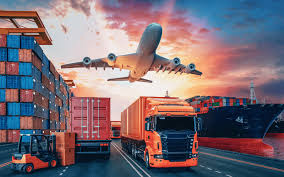Forest shipping, the travel of timber from forests to handling facilities or marketplaces, faces a variety of problems, prompting the introduction of innovative strategies to address them. Here is an search of your obstacles came across in forest shipping along with the progressive techniques simply being used to overcome them.
1. Ground and Ease of access:
Woodlands tend to be situated in far off or tough surfaces, posing substantial problems for travelling. Unavailable highways, high slopes, and unfavorable varying weather conditions can restrict traditional shipping strategies. To beat these difficulties, impressive options such as drone shipping and autonomous autos are being discovered, providing effective and expense-effective alternatives for transporting timber in demanding conditions.
2. Enviromentally friendly Impact:
forest shipping operations could have undesirable environmental outcomes, including deforestation, habitat exploitation, and contamination. Progressive procedures including sustainable signing methods, reforestation projects, and the use of biofuels are carried out to lower ecological effect. Furthermore, developments in logistics optimisation and path preparing are aiding minimize fuel intake and carbon emissions in forest shipping procedures.
3. Scientific Breakthroughs:
The integration of innovative technological innovation is revolutionizing forest shipping, maximizing efficiency, safety, and sustainability. Real-time tracking techniques, RFID tagging, and blockchain technology are now being used to track timber from the source inside the forest to the ultimate location, guaranteeing transparency and responsibility during the entire source chain. Furthermore, developments in electric powered and crossbreed cars are reducing reliance on fossil fuels, leading to eco-friendly forest shipping procedures.
4. Regulatory Compliance:
Forest shipping functions must comply with many regulations governing timber harvesting, transportation, and business. No-conformity can lead to fees, authorized charges, and reputational problems. To get around these regulatory challenges, innovative options for example agreement administration application and electronic permit solutions are being implemented, streamlining administrator functions and ensuring adherence to regulatory requirements.
5. Offer Sequence Durability:
The timber market, like many others, faces disruptions brought on by natural disasters, pandemics, and geopolitical instability. Constructing durability in the forest shipping provide sequence demands innovative approaches including diversifying travelling routes, stockpiling essential products, and leveraging info analytics to predict and minimize possible disruptions. Collaborative relationships between industry stakeholders also enjoy a crucial role in improving offer sequence resilience and making certain continuity of operations.
To conclude, forest shipping faces multifaceted obstacles that desire impressive remedies. By benefiting scientific improvements, embracing sustainable procedures, guaranteeing regulatory conformity, and encouraging provide chain resilience, the forestry sector can overcome these challenges and browse through towards a far more eco friendly and successful future.
